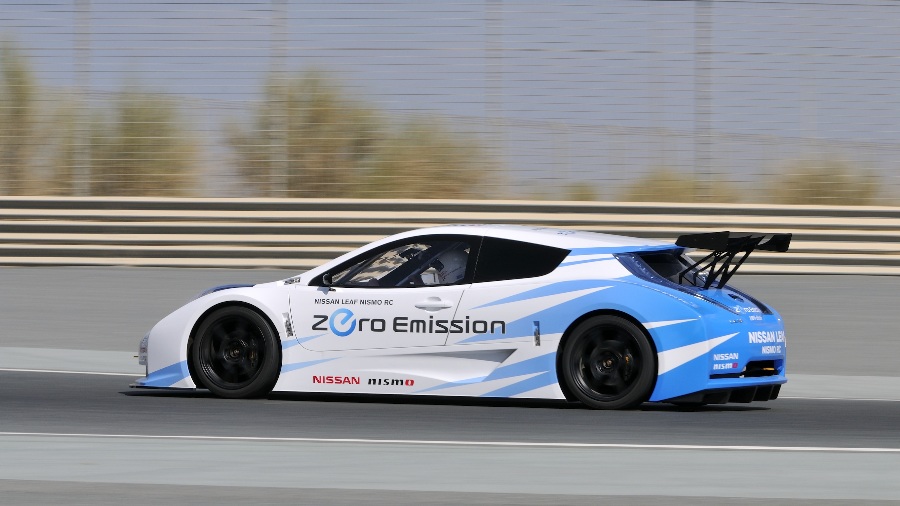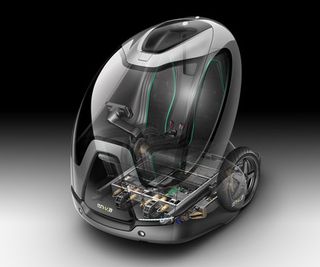
In 1886 Karl Benz patented what is widely regarded as the world's first automobile. The Motorwagen's 954cc engine delivered less than one horse power and with one front wheel handling wasn't its strong point.
But the 125 years of innovation since have seen colossal advances in both electronic and mechanical design. They've delivered significantly faster speeds, greater efficiencies and better handling.
But, the heart of the vehicle - a combustion engine delivering power to the axels controlled via a steering column - has remained constant.
As we move towards cleaner, electric vehicles this is set to change. And, what's more, this process will be visible within the next five years with communication technologies taking centre stage.
Smaller, greener, lighter, further
The market dynamic of the car industry is changing significantly.
People want smaller, lighter and more efficient vehicles that cost less to run. The cost of oil is rising and environmental concerns mean government regulations have been put in place to cut emissions. In the UK there are incentives for cars that emit fewer than 100g per km – this equates to approximately 64mpg for petrol and 74mpg for diesel vehicles.
It's therefore no wonder that designing electric vehicles is drawing significant research and development spend from the major manufacturers, indeed Renault / Nissan puts the vast majority of its research budget here.
Get daily insight, inspiration and deals in your inbox
Sign up for breaking news, reviews, opinion, top tech deals, and more.
Battery technology is slowly improving: the typical range of today's electric vehicles is just 40-60km and vehicles take two hours to charge; although this will increase, reaching120km on a 30 minute charge within five years.
However charge times and market dynamics are not the only challenges and the shift towards electric vehicles means a new way of thinking. New players from different sectors will enter the market.
One of the key changes in design is the use of corner modules, where each wheel has its own in-wheel motor and control system to drive it independently - this can be seen on GM's concept zero emission and autonomous vehicle, the EN-V. But this design is new to car manufacturers and requires system engineers with new expertise to ensure everything syncs perfectly.
Indeed, the EN-V was created in collaboration with Segway, a company with expertise in dynamic stabilisation.
Independent corner modules will also require failsafe communication networks that are optimised to control these accurately, apply corrective torque when required for better balance at speed and monitor battery life to automatically enter eco-mode to ensure the car can reach the next charge point.

Incorporating the mobile
The rise of the smartphone has meant that people are more connected than ever and car manufacturers recognise that people both want to integrate this functionality into the car and are willing to pay for it. That's a boon for the premium car market, which will implement such technologies first.
Bringing a user's phone into the vehicle not only allows the user to integrate phone functionality and entertainment libraries into whichever vehicle they are using, it also enables the car to be set up to a particular driving style. Then there's the routes that can be planned before getting into the car and communication with remote servers to avoid road works, icy / foggy roads or roads that have slowed because of a hold up.
The car will also be linked to the web, calculating or re-calculating routes to pass charging stations when required. Apps can also be created to enhance future functionality too.
But bringing in an external device also presents significant challenges.
As we've seen with the PC and phone industries, a well-designed interface that allows a great driver experience will be vital. It must be intuitive, easy to use and must not be distracting.
Furthermore, it must not affect the warranty and manufacturers will need to find a way to ensure third party data, on which several systems will be based, cannot be corrupted. In short, firewalls will be essential.
Autonomous vehicles
Obviously you can't discuss the car of the future without referencing autonomous vehicles.
The concept has been adopted in countless films from Demolition Man to Minority Report and vehicles from several manufacturers have already incorporated a number of automated driver aids, from emergency breaking systems and lane drifting alerts to blind spot sensors and auto parking assists.
Fully automated cars are already being created as proof of concept technology – with the most well publicised example coming from Google, in this case a fleet of seven vehicles – six Toyata Prius cars and an Audi TT –have been adapted to incorporate video cameras, radar sensors, LIDAR (laser based radar) and positioning systems.
The state of Nevada may have already made it legal to use autonomous cars but this is likely to be the exception for now. If this technology is adopted, and it will not be for a long time, systems will need to be failsafe. The aerospace model cannot be copied as this relies on built in redundancy, the economics for the car industry will not allow this.
And, while GPS is becoming more accurate with the introduction of Galileo, the implementation of more autonomous vehicles also requires constant communication between cars – enabling vehicle trains to be created and allowing vehicles to cross through these, for example to exit dual carriageways - and from vehicles to the road network; enabling vehicles to be alerted to changing speed limits, upcoming junctions, known hazards and suchlike. Interference must not happen so it is likely that this will be given its own dedicated RF band.
We're still decades from the sci-fi dream of autonomous car but it's clear that the technology that will enable it is already with us. Between now and then the big innovations in car design will involve wireless communications.
The mobile user interface will prove pivotal in creating a desired driver experience.
But wireless communication technologies will also be essential in designing far more efficient cars that contain the intelligence to read the road conditions and act as a failsafe for driver error.
Nick Ford will chair a panel on the future of car technologies alongside Jaguar Land Rover, McLaren Electronics, Freescale, Infineon and O2 at this year's Future World Symposium taking place at Wembley Stadium on April 24-25.
Most Popular

